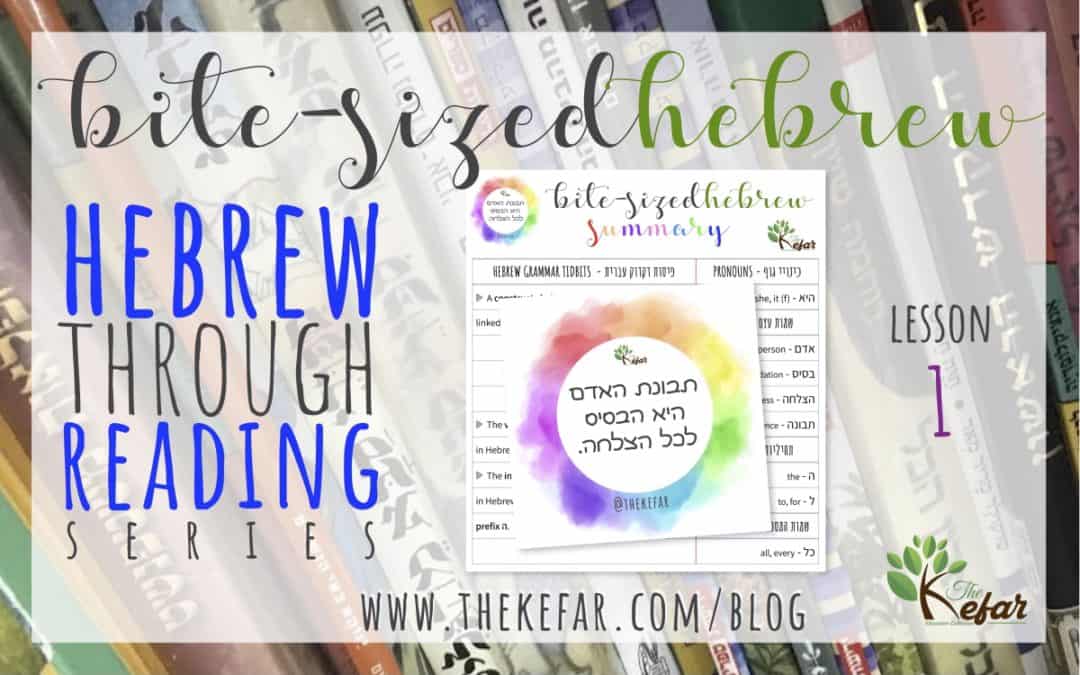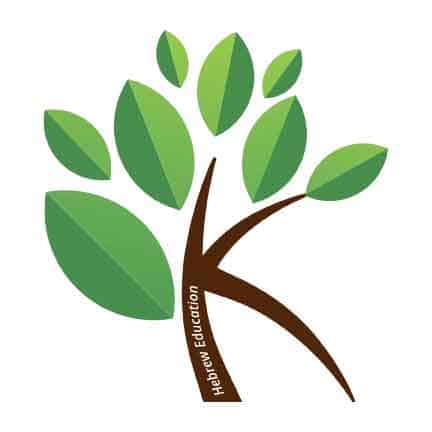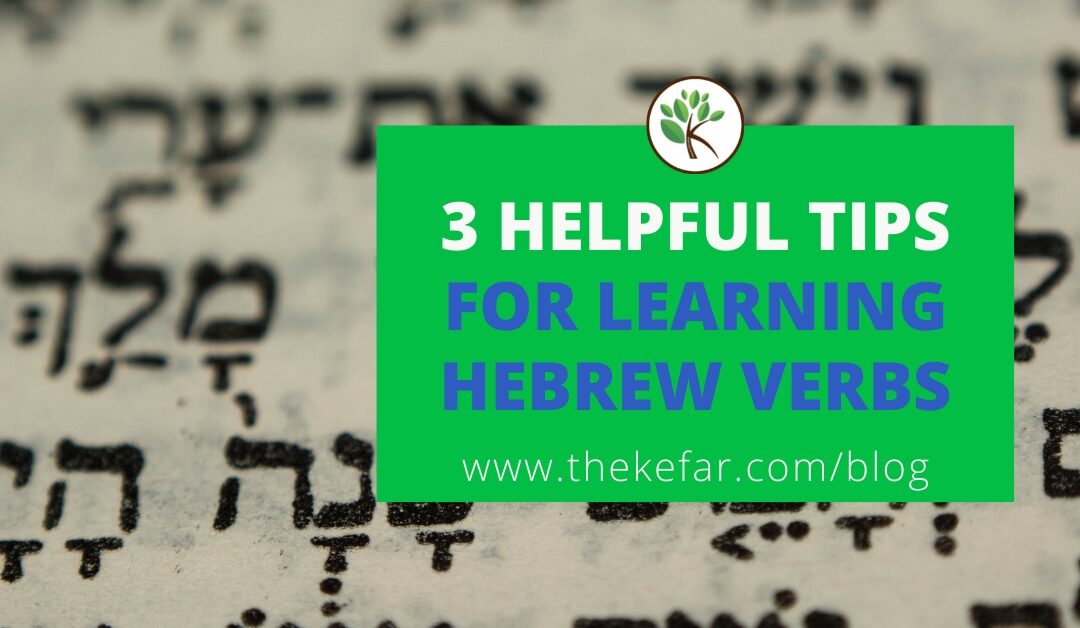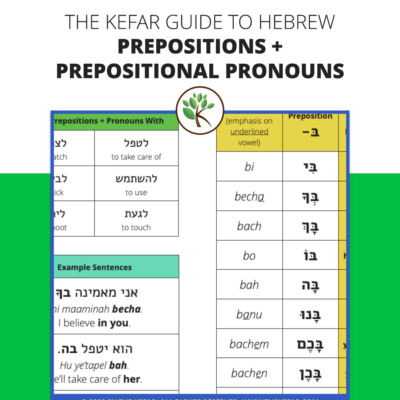Today I want to share with you three tried and true tips to help you learn Hebrew verbs, and eventually master them. These tips are what have helped me learn Hebrew verbs so well, and I still use them anytime I come across a new Hebrew verb.
Just to be sure to follow these three steps each and every time you encounter a new Hebrew verb, such as the ones I teach in my daily Hebrew sentences. The more you do it, the better you’ll become at noticing features, making connections, and conjugating verbs instinctively without needing to look anything up.
These tips won’t turn you into a Hebrew verbs master overnight, but they are guaranteed to help you get better at learning and using Hebrew verbs. Let’s get into them:
1. Notice the characteristics of the Hebrew verb: tense, gender, and number.
In Hebrew, present tense verbs will look a certain way, and the same goes for past tense, future tense, and the imperative. Whenever you encounter a new Hebrew verb, note any patterns you see, like the letter it starts with, and the letter(s) it ends with. By doing this, over time you’ll learn, for example, that:
🟢 all present tense plural masculine verbs end with IM ים–
🟢 all future tense “we” verbs start with Nun נ
🟢 all past tense “I” verbs end with TI תי–
2. Pay attention to the Hebrew verb’s sound pattern.
Say the verb aloud and pay extra attention to the vowel sounds. Then ask yourself: do I know another Hebrew verb with this same vowel pattern? Little by little, you’ll build up a mental library of Hebrew verb patterns, and you’ll encounter new verbs that fit into the patterns you already know.
This is how I’m able to conjugate and use Hebrew verbs I’ve never heard before; I know of verbs like it, so I just follow the same pattern.
Say for instance, you’re working through story 2 of Learn Hebrew Through Stories, and you come across the verb TSODEKET צודקת. This has the same sound pattern (o-e-et) as OMERET אומרת (say) and OCHELET אוכלת (eat), which you learned before. Since you know the other present tense conjugations of those two verbs, you can apply the same exact patterns to this new one:
(present tense: m.s. | f.s. | m.pl | f.pl)
🔵 TSODEK צודק | TSODEKET צודקת | TSODKIM צודקים | TSODKOT צודקות
🔵 OCHEL אוכל | OCHELET אוכלת | OCHLIM אוכלים | OCHLOT אוכלות
🔵 OMER אומר | OMERET אומרת | OMRIM אומרים | OMROT אומרות
3. Identify the preposition that’s used with the Hebrew verb.
Hebrew verbs are used with different prepositions, and I talk about this in detail in this video series. The preposition comes after the verb; in the following examples, the verb is underlined, and the preposition is in bold.
🟢 HU OZER LEKELEV הוא עוזר לכלב = He helps a dog
🟢 HU NOGE’A BEKELEV הוא נוגע בכלב = He touches a dog
🟢 HU CHOSHEV AL KELEV הוא חושב על כלב = He thinks about a dog
Slowly you’ll learn which prepositions you need to use with each Hebrew verb (and when). This can often be really confusing, especially when we learn Hebrew prepositions out of context.
For example, the preposition AL means “on” or “about.” In a phrase like “thinks about,” it makes sense to use AL. But did you know that you also use AL with the Hebrew verbs that mean “threaten” and “become angry?” In English, we say “he threatened me” (not “he threatened on me”) or “she got angry with me,” (not “she got angry about me”). So you can’t always tell what preposition you need to use with a given Hebrew verb based on what the preposition means. Watch this video to learn more, and you can also get my guide to Hebrew prepositions.
To recap, do the following to help you learn Hebrew verbs:
1️⃣ Notice the characteristics as they relate to tense, gender, and number;
2️⃣ Pay attention to the vowels, and see if you already know a verb with the same sound pattern; and
3️⃣ Identify the preposition that’s used with the verb, since many times they’re not what you think they might be, and don’t necessarily translate into English.
What questions do you have about Hebrew verbs? Let me know in the comments!
Until next time,


Bite-Sized Hebrew Lesson #1 { htr series }
I recently told you about the Hebrew reading strategies I use to increase my vocabulary,...



